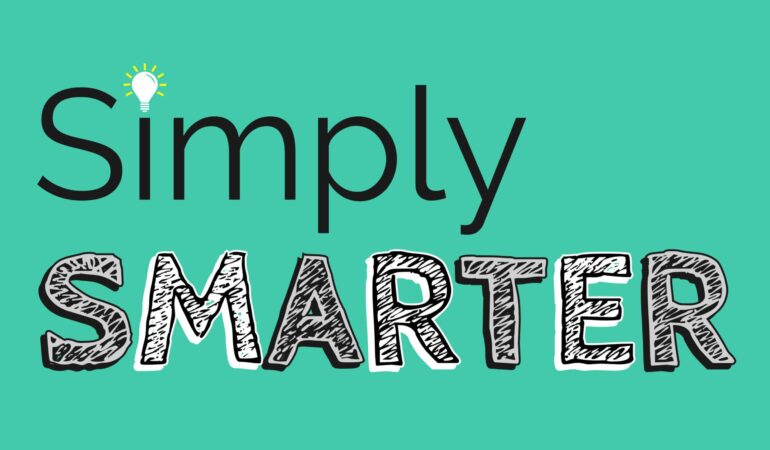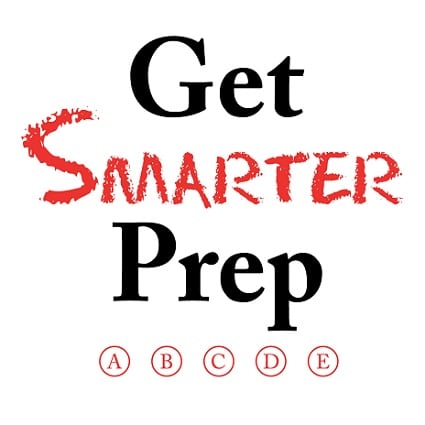ACT Specific Watches
At Get Smarter Prep, we’ve received a few questions lately about watches designed specifically for use on the ACT and other standardized tests. At first glance, these devices might seem useful. They’re intended to help you track how many minutes you have left in a section and which question or passage you should be on. They come pre-programmed with the number of minutes and questions for each section. As a bonus, they’re silent, and therefore “ACT-approved.”
As great as they seem on the surface, though, we can’t recommend them, for several reasons.
Accuracy over Speed
Accuracy is more important than speed on the ACT. Getting to your goal score is about much more than rushing to make your way to the end of a particular section within the allotted time. Nearly every student struggles with time on the ACT, and nearly every student can reach their goal without completing every question.
An important part of your preparation for the ACT should be working out which questions deserve your time and attention and which ones do not. There might be one Reading passage that consistently gives you trouble, and perhaps skipping it boosts your Reading score. There might be one type of English question that you find especially tricky or time-consuming, and perhaps skipping those types of questions and saving them for the end is your best approach. Most students benefit from cutting loose the last 10 (or 15, or 20) Math questions in favor of spending more time on the earlier questions.
These watches assume you’re going straight through the section, at a rapid, constant pace, and this simply isn’t the best approach for most students.
Each Question is Different
Some questions are harder than others.
The most obvious example of this is the Math section. Math question #47 will almost certainly take you longer than question #3 – that’s fine, as question #47 will likely be trickier and involve a bit more work.
You are not a robot who can be counted upon to spend exactly one minute per Math question, or exactly 8 minutes and 45 seconds per Reading passage. Some questions and passages will take you more time, and some will take you less. If you’re constantly glancing at your wrist, though, comparing yourself to an inflexible standard, you’ll likely only grow frustrated and distracted from what’s most important – getting points.
Each Student is Different
The ACT is a predictable, standardized exam that behaves in predictable ways. Knowing how the ACT is set up allows students and tutors to plan and strategize. However, even though the test is standardized, students are not! Each student is going to have a slightly different path to their best test performance. It is important to be open to making those adjustments as you prepare, instead of trying to base your strategy on the watch. The ACT is stubborn and inflexible enough for all of us – we need to adjust and adapt in order to be successful.
Technology Sometimes Fails
If your test performance hinges too much on the watch at your wrist, what happens if it fails? If the battery dies, or some other mundane mechanical problem arises? Your best insulation against the timing restrictions of the ACT is practice and strategy. Having a plan, practicing the plan, and following the plan is much more reliable than counting on a piece of technology that may or may not reliably get you through the exam.
Proctors Might Object
All these products advertise that they are allowed on the ACT, but a glance at their Amazon reviews shows that there have been instances where proctors don’t allow the watch into the room. If you practice with it and come to depend on it, and then the proctor doesn’t allow it into the testing room, you may become frustrated, anxious, or discouraged. That’s not a recipe for success on test day!
We want to see you get the best score you can on the ACT, and we don’t think these watches are the best way to accomplish that. Practice and preparation are key, even if they are more work than picking up a new watch.
Your Guide to Creating a Test Plan
Preparing for your future is intimidating and most students have no clue how to start the college planning process. At Get Smarter Prep, we want to help you prepare for college with an easy, step-by-step guide to help navigate students through the process. We want to make this as simple as we can, because we know you are busy with extracurricular activities, homework, sports, and not to mention being a teenager! Let’s begin creating a test plan!
Step One: Which test is best for you? ACT or SAT?
Figure out which test you should take, whether that be the ACT or the SAT. If you haven’t taken an Official exam, the best place to begin the test prep process is with a Free Practice Test. We encourage all students to establish a baseline for the ACT & SAT. Get Smarter Prep offers Free Practice Tests nearly every Saturday. Here are three basic reasons to take a Practice Test:
-
Want to know how you would score on a real test?
-
Starting one of our classes without a baseline score?
-
Want to get some fear and loathing out of the way in a practice environment?
Once you’ve take one or both tests, pick a test and stick with it. It’s best to prepare for one test only, either the ACT or the SAT, but not both. If you’ve taken both and still aren’t 100% sure which test is for you or simply don’t want to take both test, let’s take a look at some of the differences between both tests.
On the SAT, math counts for half of your score, while on the ACT math makes up only ¼. That’s a significant difference. Consider, also, how well you’ll fare without a calculator, as the SAT has a section that must be completed without one.
How much do you want to improve your score? There is much less practice material available for the SAT than for the ACT, which means fewer opportunities to practice and improve your score. If you’re looking for a significant boost, you might lean towards the ACT.
How much do you struggle with timing? The timing on the ACT is more difficult for some students. The SAT provides more time per question, which might be an asset. Taking a practice version of each will help you to know if that is the case for you.
Step Two: Which test date is right for you?
Now that you’ve decided which test you want to take, the question becomes, which test date is right for me? That’s a question only you can answer based upon your extracurricular activities, course schedule, academic readiness, and your ability to best prepare for the test.

Our courses generally start 8 weeks prior to the actual test date, so make sure you leave enough time to appropriately prepare for the ACT or SAT given your set goals. If you’re looking for a big jump in your composite score, you will need the full amount of time to prepare for the test. Schedule accordingly.
Step Three: How best to prepare for the test?
Now that you know which test you want to take and which test date fits into your schedule, lets take a look at different options to help you prepare for the test. We offer a number of different services including small group classes, Semi-Private Tutoring, and Private Tutoring.
ACT Prep Courses |
Semi-Private Tutoring |
Private Tutoring |
|
ACT Preparation Courses are focused on a smaller, more cohesive group. Get Smarter Prep students consistently find results through our tried and true curriculum. Students typically increase their scores anywhere between 2-4 points. The Curriculum for the ACT Prep Course is suited for students scoring in the 19-26 range. |
Whether you have a challenging schedule, want to work with your friends, or just want a more customized approach than our courses, Semi-Private Tutoring can be a good fit. These tutoring-course hybrids allow for some cost efficiency (like courses) AND customized scheduling & unique curriculum (like private tutoring). Groups must include at least two students, but no more than four. |
Often times we recommend Private Tutoring for students with significant differences in their sub-scores, as the tutor can target specific portions of the test, for students that have a hectic schedule (we realize how busy Junior year can be), or students that want to realize the largest score improvement possible. Our approach is customized to each student and their specific needs within each portion of the test. |
After you figure out which test is best suited for you, which test date is going to fit into your busy schedule, and how best to prepare for the test, you’ve accomplished more than most students and are on your way to tackling a big step towards your future! Good luck!
Choosing the Right College for You
With so many different choices, the decision of where to spend the next phase of your life can be a little overwhelming. Create a list of criteria and rank them by importance; use this to guide your search and narrow down the school that is right for you. Don’t know where to start? Here are some things to consider to help whittle down the lists of colleges.
-
What is Important For YOU
Make a list of “Musts” that a college has to have for you. Consider what you would like a school to offer and what you couldn’t care less about. Maybe you love marching band and continuing that passion is important to you. Your passions are a part of you and they should follow you throughout your college experience.
-
Identify Major Options
Not everyone enters college knowing exactly what they want their major to be. But before you start, you should always have a good idea of your interests and a few majors that appeal to you. Picking a school that only has one major that interests you limits your possibilities to change your mind if you find that it isn’t what you want to do for the rest of your life. Too many people have entered a major thinking they love a subject only to find that it is more of a hobby than a career for them.
-
Costs
Finances can be a huge factor in choosing a college that is right for you, but not all costs are clearly posted. Many schools only post their rates per credit hour; however, sometimes additional equipment fees can be tacked on to your bill unexpectedly. Figure out what you can afford before you make any decisions. Look for scholarship opportunities both within the school and out of school for the best chance to be able to afford your dream school.
-
School Rankings
All schools are not created equal. Every college has their different strengths and weaknesses. Researching national rankings can give you a better idea if the school’s focus and direction line up with your own.
-
Class Quality and Size
The size of a school can factor into the quality of education available to you. You have to know what you are comfortable with regarding class size. If you attend a bigger college, classes will also be large. Classes with a student to teacher ratio of 300 to one are common with larger schools. Know your learning style and what will be the best environment for you.
-
Past and Current Students’ Opinions
Listen to what others have to say. Alumni and current students will give you better insight into the day to day life than any admissions representative. You never know what useful things you can learn.
-
Campus Visit
This cannot be stressed enough. See the campus for yourself: pictures and videos can only show so much. Use the opportunity to talk to students, see different buildings, and get a general feel for the campus. Is the campus small enough to walk between classes? Things like very limited parking or how well the facilities and dorms are maintained can tip the balance between schools.
-
Housing Options
Most college students will spend 2-6 years at college. Of course, you will need a place to live, and chances are you will be moving multiple times throughout your time there. Don’t just assume you will be living in the dorms your whole stay. Check out the surrounding area. What are the options like? How far are they from campus? Are they affordable?
-
Work Options
Everyone can use a little spending money, and others will need some additional income to pay for the cost of tuition. Look at local businesses and see what kind of opportunities are available and how many are open to students. Is there Work Study available on campus?
-
Gut Feeling
Trust your instincts. Some places will just give you a bad vibe. Try to identify what these things are, but even if you can’t do that, do not just ignore it. Other times you will step foot on campus and feel like you just came home. Gut feelings can go both ways; give them a voice in your decision.
Whatever school you choose should fit the college experience you are looking for in a school. Don’t let tradition or peer pressure put you somewhere you don’t belong. Trust and know yourself. You are going to college for you, so you should feel great about whatever decision you make.
Making A Great Persuasive Essay
Nerves abound as the teacher walks through the room. Every student waiting anxiously, stirring in their seats as names are called out one by one. Finally, your name is called; stiffening as your paper lands on your desk, you gasp. One glance at all the red ink and your heart sinks; the essay you spent all night writing barely resembles the original copy. You think to yourself, “But I tried so hard. What did I do wrong?”
This story can be echoed by students across the country. Whether you are answering an ACT or AP test prompt, or submitting a college scholarship essay, persuasive writing is not about trying hard but understanding how to craft an effective argument. There are several common mistakes that are easy to fix.
-
Planning the Essay
Too often students are given a prompt, brainstorm a few ideas, then begin writing. To really plan an essay you need to figure out more than just your thesis statement. A good plan should include how you are going to defend your thesis, what arguments others might pose and how to counter them, and what evidence you will use to support these claims. With a good plan the essay can almost write itself. All you need to do is link the arguments together.
-
Supporting a Claim
What is the difference between a claim and evidence? While most people can articulate the difference, these often become muddled in essay writing. A claim is a statement that presents a perspective and a belief on a certain subject. Evidence is a factual statement that provides support for a claim. For example, If I stated that M&Ms are the best candy, few people would accept it. However, if I provide concrete evidence I can give weight to this claim. But evidence can have varying strengths. Good evidence can look like this: “Fox News reported that M&Ms sold the most units and were the highest revenue generating chocolate candy in America for 2017.” This evidence has a strong source, provides a metric for comparison, and covers a large sample size. By leaving any of these out the evidence loses credibility and effectiveness. Let’s see what bad evidence would look like: “Mr. Johnson’s fourth grade class voted M&M’s as their favorite candy”. This extreme has very little credibility, a tiny sample size, and provided no metric for comparison. Just remember, whenever you make a claim it needs good evidence to support it.
-
Understanding Perspectives
Trying to make an essay stand out can be hard. But one surefire way to catch a grader’s eye is to show understanding of what drives different perspectives. By arguing against the emotions or motivations of counterpoints you can move past just responding to a prompt and start providing real insight. Anyone can rewrite a prompt in their own words, but few are able to dissect that prompt and move past just regurgitating the same old lines.
All these things can bring strength and life to your essay writing that might be missing in your peer’s. This is not about changing your style of writing, merely approaching your essay differently. Focus on writing clearly with sound arguments and you will see a lot less red ink marring your essays.
Which College Majors Have the Best ROI?
Whether or not you choose to go to college and earn a 4 or 5-year degree is up to you. There is no right or wrong answer here. There is, however, a smarter way to look at the college debt you will accrue and how to graduate college with a higher chance of getting hired into the field you studied.
U.S. News and World Report has put together a list of top college majors for finding full time work and the number one college major may be a surprise to everyone. Most anyone you ask will tell you that you can’t go wrong with a business degree. That may be true, but it wasn’t at the top of this list. The number one top bachelor’s degree by demand was an Accounting degree with a 54.4% chance of hire. Coming in as a close second is a Computer Science degree with 53.9% chance of hire and the third sought-after bachelor’s degree is Finance with a 50.6% chance of hire. Business came in at number four with 47.8% plan to hire.
Knowing which college majors are going to be the most sought after will help any high school or college student narrow down their field of study as the goal is to get a job and start a career based on their college major. Double majoring with in-demand majors will also help you obtain a job within your field of study. Most likely if you graduate with one of these majors, you will get a job more quickly and a higher salary.
Entering college with a more calculated approach as opposed to “figuring it out along the way”, will also help you gauge your ROI. Figuring out what specific colleges cost over four years, the projected hire for a college major, and the probable salary will give you a more precise return on your investment and help keep students focused along the way.
Obviously, not every student will choose a major entering college or maybe not even their freshman year of college. However, the more knowledge you have surrounding college majors, their projected income, and the likeliness to obtain a job straight out of college, the easier it will be to choose a career that makes sense to you.
ACT Extended Time Changes
For the last few years, ACT’s National Extended Time policy has been full of changes. Beginning in 2016, the ACT began providing students with an open, self-paced 5-hour block to complete their test (or a 6-hour block with the optional Writing). In the 2017-2018 school year, ACT moved to separate the 1-hour Writing time from the 5-hour multiple choice block, so that all students had 5 hours for the multiple choice, whether or not they were going to complete the Writing.
Now the ACT is moving away from the self-paced block of time all together. ACT says that “self-pacing on the extended-time test is intended to provide flexibility… [but] it can have the reverse effect, requiring an additional demand beyond what is required of those testing with standard time or other types of accommodations.” Instead, beginning in September 2018, the National Extended Time testing will look much like it did pre-2006, with a specific amount of time being allotted to each section:
ACT Extended Time Changes
|
English |
70 minutes |
|
Math |
90 minutes |
|
Break |
15 minutes |
|
Reading |
55 minutes |
|
Science |
55 minutes |
What does this change mean for students?
-
Pacing
The current rules have provided an additional challenge for some students, as maintaining a good pace for the entire exam might be tricky. The new structure will enforce the pacing from section to section, so a student is free to focus on pacing within a section, instead of between them.
-
Flexibility
If you have been practicing your exam using only 45 minutes for English and 120 minutes for Math, you’ll need to adjust your strategy. There was some added flexibility with the previous timing structure that will no longer be available, as each section will have its own firm time boundary.
-
Breaks
There will be one 15 minute break scheduled after the Math section. Under the current rules, students are allowed to take breaks as they choose throughout the 5 hour time period, and we normally suggested a short break after each section. The new structure will have a student taking a break only after their first 2 hours and 40 minutes of testing.
If you’ve been taking the test with the current structure, and you’re taking your last ACT in July, then there will be no changes for you! However, if you won’t take your first ACT until September, then you’ll just want to make sure you practice with the new timing allotments. If you’ve already been preparing, though, and will need to change your strategy, some additional timed practice might be in order to make sure you’re making the most of the time for each section.
To stay in the know about ACT Extended Time Changes, visit ACT.org.
Why We Offer Free Practice Tests
At Get Smarter Prep we offer a FREE SAT or ACT Practice Test almost every Saturday. This isn’t new. We’ve always offered free practice tests. Establishing a baseline score for the ACT and SAT is the best place to start in the process of preparing for an official ACT. Unlike big box test prep companies, which use exams their employees made up, we use actual ACTs or SATs that were given in the last 3 years.
Establish a baseline score
There are a number of reasons to establish a baseline score. As stated previously, our ACT and SAT practice tests are actual tests that were given within the last few years, so you will know how you would score on a real test.
We want you to establish a baseline score, so we can guide you into either our ACT Prep Courses, Semi-Private Classes or Private Classes. Without a score to go off, we are walking in blind. We don’t know what your strengths are in each category and as part of our process, we want to tailor the way we tutor to each student so they can get the most out of each tutoring session.
Reduce Anxiety
Our Free ACT Practice Test is a great opportunity to alleviate some of the fear and loathing of these standardized tests. It’s also a great time to examine the timing of the test and see how well you did with the timing piece as so many students tend to run out of time in different sections.
All of these, and more, are good reasons to take an absolutely free practice exam with us. That way you’ll get an accurate score, as opposed to a guess. We think it’s such an important piece in learning where you begin for both tests that we want to make it readily available to every high school student who is interested.
One Point Improvement?
“The most important investment you can make is in yourself.” – Warren Buffet
Most high school students taking the ACT test have a certain goal in mind for their composite score. Of course, each student has different variables for their specific situation such as, automatic college admittance, scholarships, reach schools, etc. However, when it comes down to it, is every point achieved on the ACT the same?
There are benefits to increasing your ACT composite score no matter where you fall on the ACT score spectrum.
One Point Improvement
At Get Smarter Prep, we have had some students who only went up on point on their ACT. Sometimes all a student needs is a one-point improvement, other times they were looking for a four-point jump. What many don’t understand is that one point can mean the difference between a $1,000 yearly scholarship ($4,000 over the span of 4 years) and no scholarship at all. That one point difference is still an advantage!
Let’s say on this last ACT you achieved a composite score of 24. Roughly 100,000 other college bound students with that score, as well as entered the range in which most colleges begin offering scholarships. Also, some colleges are offering automatic admission with a 24 (most of these schools also have minimum GPA standards and curriculum requirements).
Every point earned on the ACT is a step in the right direction. Don’t lose heart if you only bump up one point, there are still benefits to that one point. As Benjamin Franklin once said, “An investment in knowledge pays the best interest.”
No matter if that one point is all it took to get automatically accepted into college, be offered a scholarship, or get into an Ivy League school, that one point improvement helped shape the direction of your future.
Is Private Tutoring Right for You?
How do you know if private tutoring is right for you? What about classes or tutoring with a group of friends? There are a few items we need to look at before deciding which type of tutoring is a perfect fit for you.
Private Tutoring
One-on-One Tutoring is perfect for students with a significant difference in their sub-scores. For example, if Jane scored a 17 in the Reading section of the ACT, but a 24 in the English section, then she would be a prime example of why Private Tutoring would work in her favor as the tutor can target specific portions of the test. Our tutors will be able to spend different amounts of time in each portion of the test depending on where the student needs the most help.
Another reason to access Private Tutoring is due to a hectic schedule. We realize how busy your Junior year can be. Maybe a standard class won’t fit into your schedule, but private tutoring can be a lot more flexible and conducive to your calendar. Private Tutorials are usually scheduled for one and a half hour sessions and are typically between 6 & 15 hours in duration (4-10 weeks).
Semi-Private Tutoring
This type of tutoring is for students scoring within the same range as 1-3 other students. Whether you have a challenging schedule, want to work with your friends, or just want a more customized approach than our courses, Semi-Private Tutoring can be a good fit.
These tutoring-course hybrids allow for some cost efficiency (like courses) AND customized scheduling & unique curriculum (like private tutoring). The standard time frame for Semi-Private Tutoring is 20 hours, but 12-20 hour schedules are available based upon what each student of the group hopes to achieve.
ACT Prep Course
No matter what the situation may be, Get Smarter Prep offers custom tutoring to fit any schedule, classes to accommodate a wide range of students’ scores, and we work with each student to help achieve the score they need for the school they want.











